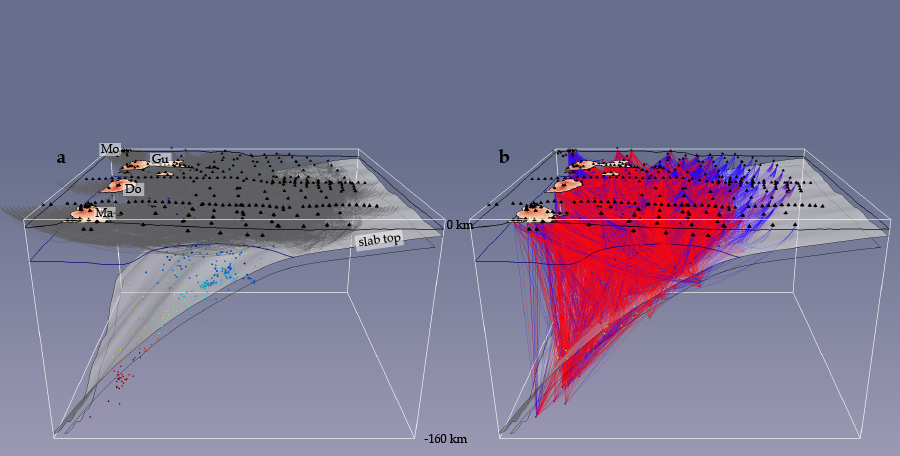 Subducting slabs carry water into the mantle and are a major gateway in the global geochemical water cycle. Fluid transport and release can be constrained with seismological data. Here we use joint active-source/local-earthquake seismic tomography to derive unprecedented constraints on multi-stage fluid release from subducting slow-spread oceanic lithosphere.
Subducting slabs carry water into the mantle and are a major gateway in the global geochemical water cycle. Fluid transport and release can be constrained with seismological data. Here we use joint active-source/local-earthquake seismic tomography to derive unprecedented constraints on multi-stage fluid release from subducting slow-spread oceanic lithosphere.
We image the low P-wave velocity crustal layer on the slab top and show that it disappears beneath 60–100 km depth, marking the depth of dehydration metamorphism and eclogitization. Clustering of seismicity at 120–160 km depth suggests that the slab’s mantle dehydrates beneath the volcanic arc, and may be the main source of fluids triggering arc magma generation. Lateral variations in seismic properties on the slab surface suggest that serpentinized peridotite exhumed in tectonized slow-spread crust near fracture zones may increase water transport to sub-arc depths.
This results in heterogeneous water release and directly impacts earthquakes generation and mantle wedge dynamics.
PRINCIPAL INVESTIGATOR: M. Laigle
FUNDING: AXA Research Fund, Prix de la Fondation Simone et Cino Del Duca/French Academy of Science




